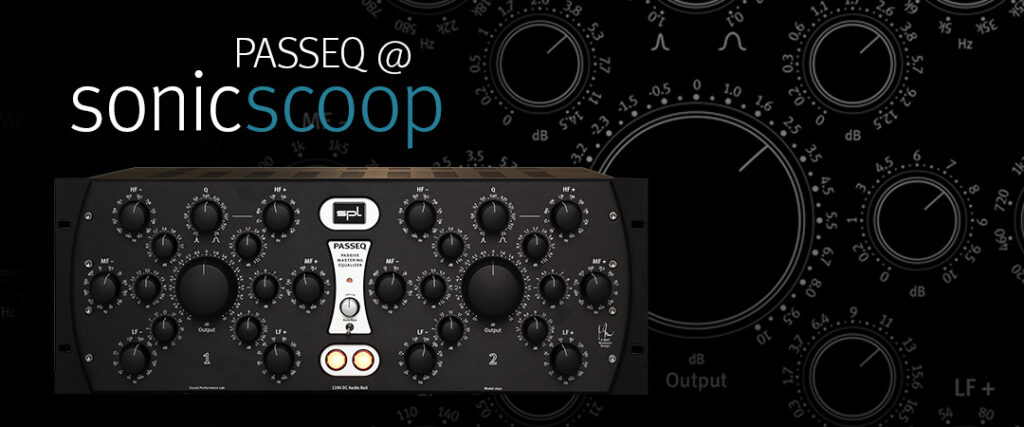“My god, that roundness in the kick drum! The sense of depth of the bass when it enters! And of course, the sheer dimensionality the processor adds – the weight is just what I want.”
Nick Messitte of sonicscoop has spent some time with our Passive Mastering Equalizer SPL PASSEQ.
The result is a great review plus audio examples – visit sonicscoop and check it out. Here’s a short summary:
“So let’s dive into this beast of an EQ and see what it is, what it does, and why it takes a minute to fully unpack its goodies.”
Layout and featues:
“The PASSEQ offers three bands (low, mids, and highs), each with their own independent boost and cut sections.”
“A prominent… output-gain attenuator (or volume knob) serves as a bullseye, and around this bullseye you’ll find all the other pertinent controls. Frequency selectors and gain knobs encircle the target. Your cuts sit on the left of the big volume knob; your boosts lie to the right. The orientation from bass to treble doesn’t move from left to right, but from bottom to top… it actually makes a ton of sense. There comes a moment when the layout reveals itself to your brain, and the whole thing becomes second nature.”
120V Technology:
“As with the PQ, the PASSEQ utilizes SPL’s VOLTAiR technology, and this means one glorious thing: 120V rails. These, the company tells us, allow for greater dynamic range and a higher degree of headroom. In practice, I’ve found this to be true, from the euphonic quality of the signal path, to the functional operation of the gain knobs, which keep the signal clean as you boost or cut.”
Sound:
“Known both for their broad, tonal-shaping qualities and their inherently musical sound, passive equalizers are interesting beasts.” I find this tone both beneficial and euphonic.”
“On a purely subjective level, I note that the bass synth feels closer to me, while the drums seem to envelope the bass pattern more. The hi-hats and high-end percussion, in particular, feel more situated.”
“When the bass enters, you can hear how the EQ adds the necessary frequencies to help the kick drum cut through, without sacrificing any of the roundness I’d want out of the part. So that was a win.”
Conclusion:
“I believe SPL have made a sizable contribution here to the world of mastering-grade passive equalizers.”
“Given that fact, I’m glad I took the time to truly listen to this EQ, and to learn how to unpack its secrets.”
“I feel that this bears repeating: this is a processor that can truly add a lot to your material…”






